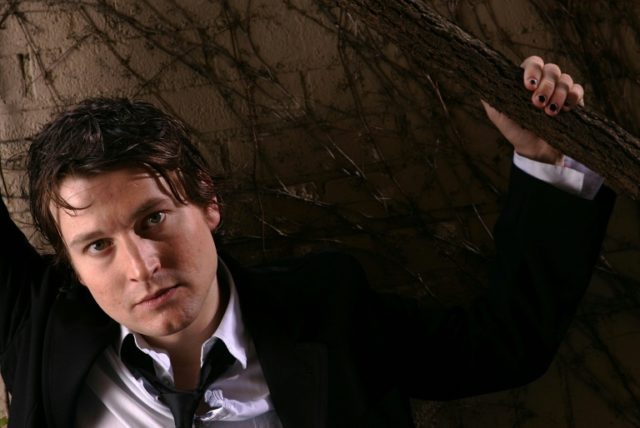Los Angeles (AFP) – Part man, part machine — the ultimate expression of humanity’s dominion over nature — cyborgs have been a staple of popular culture since they were unleashed in a short story by Edgar Allen Poe 175 years ago.
Today they walk among us, in our movie theaters and in the real world, where pacemakers are prolonging lives and prostheses are helping paralympians win gold medals.
More plausible than zombies or interstellar travel, cyborgs offer sci-fi fans a glimpse of a future that is already upon us, speaking to ancient paranoias about untrammeled technology wielded without responsibility.
“I worry a lot more about human beings than tech,” says Leigh Whannell, the writer of the best “Saw” movies and the entire “Insidious” franchise, whose cyborg thriller “Upgrade” hits US theaters on Friday.
“Even my fears about tech have to do with human beings. We are the ones creating this stuff, the great minds of tech, from Elon Musk to Steve Jobs, at one time,” the 41-year-old Australian tells AFP.
“These are the minds that are able to conceive and build these worlds and I’m worried about our tendencies.”
A cyborg — short for “cybernetic organism” — is a person with restored or enhanced mechanical or electrical body parts, typically giving them abilities beyond those of normal humans.
They are not to be confused with androids, robots that have been made to appear human. So the Terminator, for example, doesn’t count — but Robocop does.
Their first appearance in fiction is generally credited to the 1843 Poe short story “The Man That Was Used Up,” which describes a disabled war veteran with extensive prostheses.
– ‘Undercurrent of anxiety’ –
“Upgrade” is the latest of several dozen mainstream cyborg, android and robot movies made since 1980, with Box Office Mojo attributing an average North American box office among the wide releases of about $100 million.
Cyborgs have been good guys and baddies down the years, from “The Six Million Dollar Man” through “Inspector Gadget” and perhaps the most iconic cyborg of them all, “Darth Vader.”
They continue to captivate, says Whannell, because they tap into a persistent dread about augmented reality, artificial intelligence and other advances — that the technology is gradually becoming our master.
Whannell uses the example of his smartphone, which makes him anxious whenever he opens it and checks the news. And it’s the messenger, not the message, that’s the problem.
“You could say smartphones are a first world problem, like people in Syria aren’t worried about Twitter, they’ve got bigger things to worry about,” the Australian tells AFP.
“But I think that there is an undercurrent of anxiety in modern society that has to do with our reliance on tech and the bombardment of information that comes from it.”
In “Upgrade,” curmudgeonly mechanic Grey Trace (Logan Marshall-Green), a technophobe sore thumb in a digital near-future, takes his wife Asha as he delivers a restored classic car to tech billionaire Erin King.
On the way home their self-driving car crashes and they are attacked by a gang who shoot dead Asha (Melanie Vallejo) and leave Grey a quadriplegic.
King (Harrison Gilbertson) visits Grey in hospital and convinces him that his cutting-edge computer chip — he calls it “Stem” — will help him regain control over his ravaged body.
– Souped-up Siri –
Stem operates like a souped-up Siri, speaking in a voice only Trace can hear and able to operate his body independently, turning him into a cross between Usain Bolt and Bruce Lee.
Since his 2004 portrayal as terrified hostage Adam Stanheight in James Wan’s “Saw,” Whannell has become one of the most influential voices in 21st century horror.
He wrote three of the “Saw” movies — including that landmark first film, an early pioneer in the controversial “torture porn” genre — while his “Insidious” films made half a billion dollars worldwide on a combined budget of $27 million.
Whannell made his directorial debut with the third chapter in the series three years ago and was asked to direct 2018’s “Insidious: The Last Key,” but declined, preferring instead to strike out on his own.
He still speaks with awe — and no small amount of humility — about his involvement in “Saw,” and recalls, laughing, how Wan phoned him with the idea for the first and last scenes while Wan was on the toilet.
“It still gives me goosebumps to this day to think that this idea that we talked about back in Melbourne has connected with people around the world, that it has become a part of the pop culture zeitgeist,” Whannell said.
“You can make a ‘Saw’ reference now and everyone knows what you’re talking about. You just to see an image of that puppet’s face and people know what it’s all about.
“It’s up there with ‘E.T.,’ ‘Jaws’ and ‘The Simpsons’ and Coca-Cola and all the other pop culture memes that go around the world. That’s pretty amazing for us.”

COMMENTS
Please let us know if you're having issues with commenting.